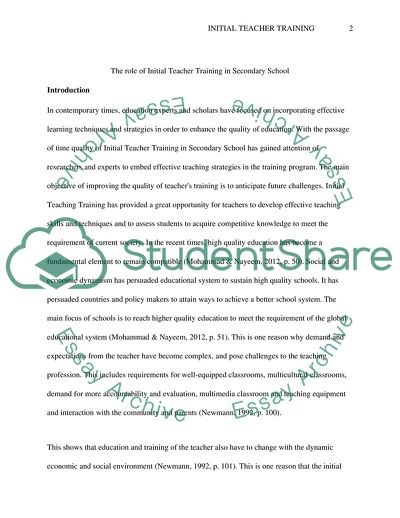Cite this document
(The Role of Initial Teacher Training in Secondary School Literature review Example | Topics and Well Written Essays - 4000 words, n.d.)
The Role of Initial Teacher Training in Secondary School Literature review Example | Topics and Well Written Essays - 4000 words. https://studentshare.org/education/1812113-the-role-of-the-initial-teacher-training-in-secondary-school
The Role of Initial Teacher Training in Secondary School Literature review Example | Topics and Well Written Essays - 4000 words. https://studentshare.org/education/1812113-the-role-of-the-initial-teacher-training-in-secondary-school
(The Role of Initial Teacher Training in Secondary School Literature Review Example | Topics and Well Written Essays - 4000 Words)
The Role of Initial Teacher Training in Secondary School Literature Review Example | Topics and Well Written Essays - 4000 Words. https://studentshare.org/education/1812113-the-role-of-the-initial-teacher-training-in-secondary-school.
The Role of Initial Teacher Training in Secondary School Literature Review Example | Topics and Well Written Essays - 4000 Words. https://studentshare.org/education/1812113-the-role-of-the-initial-teacher-training-in-secondary-school.
“The Role of Initial Teacher Training in Secondary School Literature Review Example | Topics and Well Written Essays - 4000 Words”. https://studentshare.org/education/1812113-the-role-of-the-initial-teacher-training-in-secondary-school.


